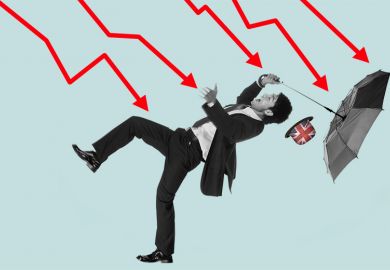Helga Drummond is professor of decision sciences at the University of Liverpool. It is a strange job title. Does anyone seriously believe the study of decisions to be a science? It is even stranger that Drummond should hold a chair in decision-making. She has little faith in the reliability of data, most of which she believes to be inadequate and misleading; and even less faith in human ability to analyse inadequate data, because of the bias of our preconceptions and prejudices. The only thing she appears unequivocally certain about is that most decisions end in disaster.
The Art of Decision Making is full of disasters, factual and fictional, historic and modern. At sea we have the sinkings of the Mary Rose , the Titanic , the Exxon Valdez , the Herald of Free Enterprise and the Kursk . In the air we have the fatal crashes of the Turkish DC 10 in 1974, of the KLM and Pan Am flights in Tenerife in 1977, of the Challenger in 1986, of the British Midlands 737 in 1989, of flight TWA 800 in 1998, and of Concorde. At the bank counter we find the crooked BCCI and the short-lived Barclays de Zoete Wedd; Nick Leeson and Barings make repeated guest appearances; and Taurus, the bull-in-a-stock-exchange computer, enters the ring regularly. We also visit Pearl Harbor, Vietnam, the first world war trenches and the Dardanelles (awarded an entire chapter), BSE and the Black Death, Chernobyl and Bhopal, Hamlet and Scrooge, Neville Chamberlain and Neil Hamilton, the Millennium Dome and even Peter Mandelson. I counted no fewer than eight separate calamities in five pages.
To explain all these calamities, the author advances a series of maxims and aphorisms set as single-line paragraphs in italics. They are perhaps intended to resemble Newtonian laws: immutable principles that explain why aeroplanes fall from the sky, as gravity explains why apples fall from trees. Not all the maxims are twaddle, but those that are not are trite: old truisms in new verbiage.
The problem with concentrating exclusively on decisions with disastrous outcomes is that most decisions, arguably the vast majority, do not lead to disaster. For every ship that sinks, a million sail safely into harbour. Day after day we all get up, find our way around the house, achieve one or two things - and doubtless make lots of mistakes as well as taking lots of successful decisions. In the final few pages, Drummond appears to recognise and unwillingly accept that things sometimes go right - but she is not interested in analysing why. Peering at the world through cracked glasses is, for her, far more enthralling.
It is not hard to see how this book came to be written. Tales of crisis and calamity can be good fun; and advancing aphoristic explanations of how they came to pass can be good fun too. It is harder to see how the book came to be published.
Trying to build a theory of decision-making entirely on disasters is like trying to build physics on experiments that went wrong. You can learn quite a bit from experiments that go wrong, but only if you transmute the knowledge into experiments that go right.
Winston Fletcher is chairman, The Royal Institution.
The Art of Decision Making
ISBN - 0 471 49718 5
Publisher - Wiley
Price - £17.99
Pages - 306
Register to continue
Why register?
- Registration is free and only takes a moment
- Once registered, you can read 3 articles a month
- Sign up for our newsletter
Subscribe
Or subscribe for unlimited access to:
- Unlimited access to news, views, insights & reviews
- Digital editions
- Digital access to THE’s university and college rankings analysis
Already registered or a current subscriber?



